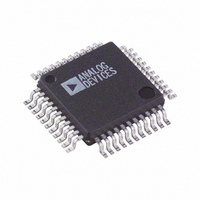AD7865BSZ-1 Analog Devices Inc, AD7865BSZ-1 Datasheet - Page 12

AD7865BSZ-1
Manufacturer Part Number
AD7865BSZ-1
Description
4 CH. SIMULTANEOUS BIPOLAR,14-B ADC I.C.
Manufacturer
Analog Devices Inc
Datasheet
1.AD7865AS-2REEL.pdf
(19 pages)
Specifications of AD7865BSZ-1
Number Of Bits
14
Sampling Rate (per Second)
350k
Data Interface
Parallel
Number Of Converters
1
Power Dissipation (max)
160mW
Voltage Supply Source
Analog and Digital
Operating Temperature
-40°C ~ 85°C
Mounting Type
Surface Mount
Package / Case
44-MQFP, 44-PQFP
Lead Free Status / RoHS Status
Lead free / RoHS Compliant
Available stocks
Company
Part Number
Manufacturer
Quantity
Price
Company:
Part Number:
AD7865BSZ-1
Manufacturer:
ADI
Quantity:
364
Company:
Part Number:
AD7865BSZ-1
Manufacturer:
Analog Devices Inc
Quantity:
10 000
Part Number:
AD7865BSZ-1
Manufacturer:
ADI/亚德诺
Quantity:
20 000
Company:
Part Number:
AD7865BSZ-1REEL
Manufacturer:
Analog Devices Inc
Quantity:
10 000
AD7865
TIMING AND CONTROL
Reading Between Each Conversion in the Conversion Sequence
Figure 7 shows the timing and control sequence required to
obtain the optimum throughput rate from the AD7865. To
obtain the optimum throughput from the AD7865 the user must
read the result of each conversion as it becomes available. The
timing diagram in Figure 7 shows a read operation each time the
EOC signal goes logic low. The timing in Figure 7 shows a
conversion on all four analog channels (SL1 to SL4 = 1, see
Selecting a Conversion Sequence), hence there are four EOC
pulses and four read operations to access the result of each of
the four conversions.
A conversion is initiated on the rising edge of CONVST. This
places all four track/holds into hold simultaneously. New data
from this conversion sequence is available for the first channel
selected (A
channel is completed at 2.4 µs intervals. The end of each con-
version is indicated by the falling edge of the EOC signal. The
BUSY output signal indicates the end of conversion for all
selected channels (four in this case).
Data is read from the part via a 14-bit parallel data bus with
standard CS and RD signals. The CS and RD inputs are inter-
nally gated to enable the conversion result onto the data bus.
The data lines DB0 to DB13 leave their high impedance state
when both CS and RD are logic low. Therefore, CS may be
permanently tied logic low and the RD signal used to access the
conversion result. Since each conversion result is latched into its
output data register at the same time EOC goes logic low a
further option would be to tie the EOC and RD pins together
with CS tied logic low and use the rising edge of EOC to latch
the conversion result. Although the AD7865 has some special
features that permit reading during a conversion (e.g., a sepa-
rate supply for the output data drivers, V
performance it is recommended that the read operation be
IN1
) 2.4 µs later. The conversion on each subsequent
FRSTDATA
SL1–SL4
CONVST
H/S SEL
BUSY
DATA
EOC
RD
CS
t
2
t
1
t
CONV
100ns
100ns
t
3
DRIVE
t
t
V
9
12
IN1
), for optimum
t
4
t
6
t
t
BUSY
11
t
V
5
IN2
completed when EOC is logic low, i.e., before the start of the
next conversion. Although Figure 7 shows the read operation
taking place during the EOC pulse, a read operation can take
place at any time. Figure 7 shows a timing specification called
“Quiet Time.” This is the amount of time that should be left
after a read operation and before the next conversion is initi-
ated. The quiet time heavily depends on data bus capacitance
but a figure of 50 ns to 150 ns is typical.
The signal labeled FRSTDATA (First Data Word) indicates to
the user that the pointer associated with the output data regis-
ters is pointing to the first conversion result by going logic high.
The pointer is reset to point to the first data location (i.e., first
conversion result,) at the end of the first conversion just prior to
EOC going low. The pointer is incremented to point to the next
register (next conversion result) by a rising edge of RD only if
that conversion result is available. If a read takes place before
the next conversion is complete (as shown in Figure 7) then the
pointer is incremented at the end of that conversion when the
EOC pulse goes low. Hence, FRSTDATA in Figure 7 is seen to
go low just after to the second EOC pulse. Repeated read
operations during a conversion will continue to access the data
at the current pointer location until the pointer is incremented
at the end of that conversion. Note: FRSTDATA has an indeter-
minate logic state after initial power-up. This means that for the
first conversion sequence after power-up, the FRSTDATA
logic output may already be logic high before the end of the first
conversion. This condition is indicated by the dashed line in
Figure 7. Also the FRSTDATA logic output may already be
high as a result of the previous read sequence as is the case after
the fourth read in Figure 7. The fourth read (rising edge of RD)
resets the pointer to the first data location. There, however,
FRSTDATA is already high when the next conversion sequence
is initiated.
t
7
V
t
CONV
IN3
V
IN4
t
ACQ
QUIET
TIME
t
10













